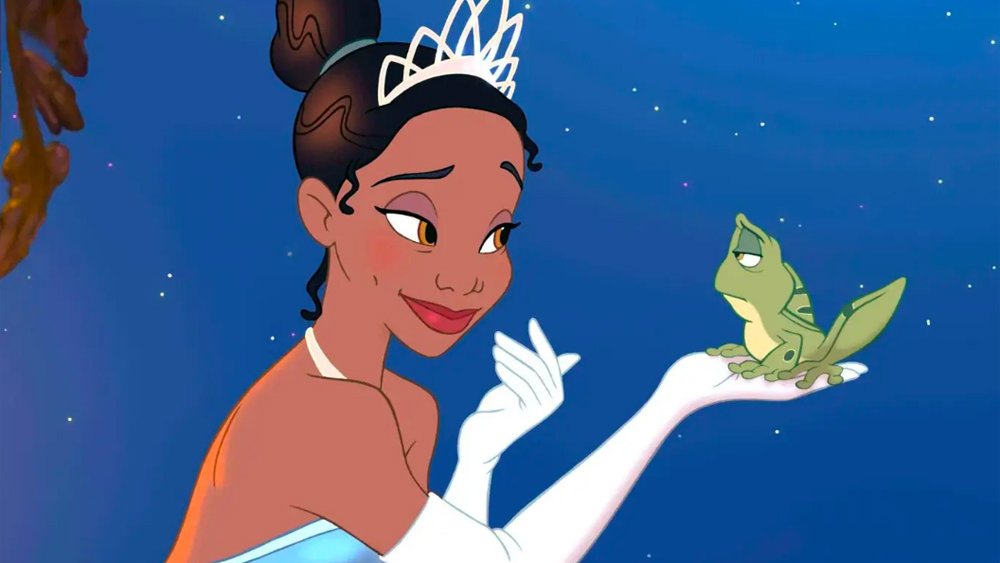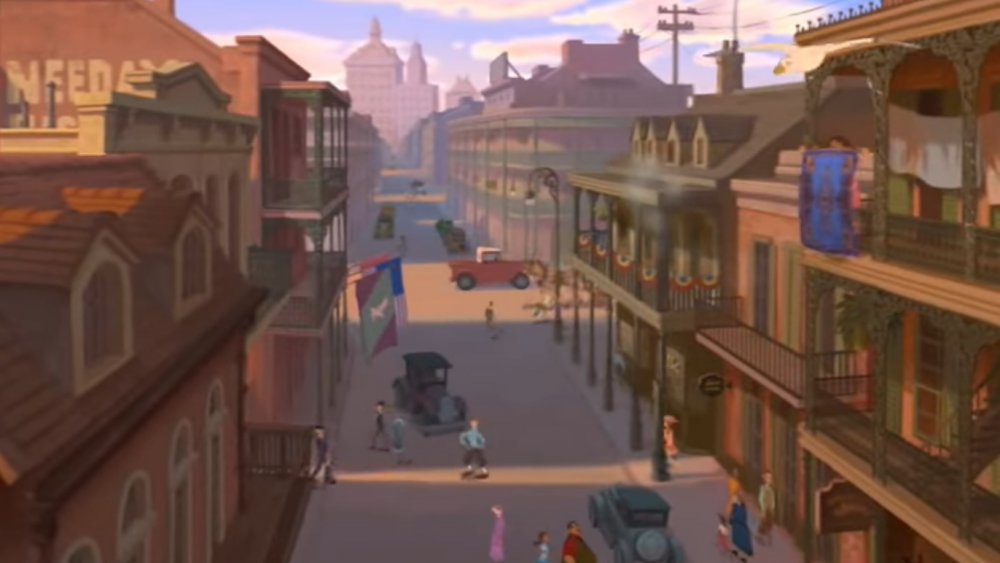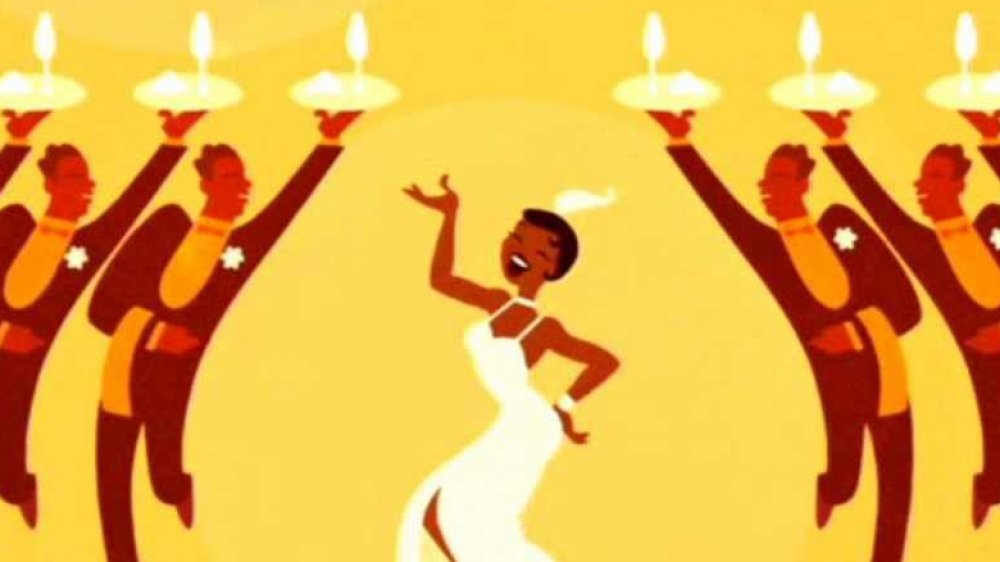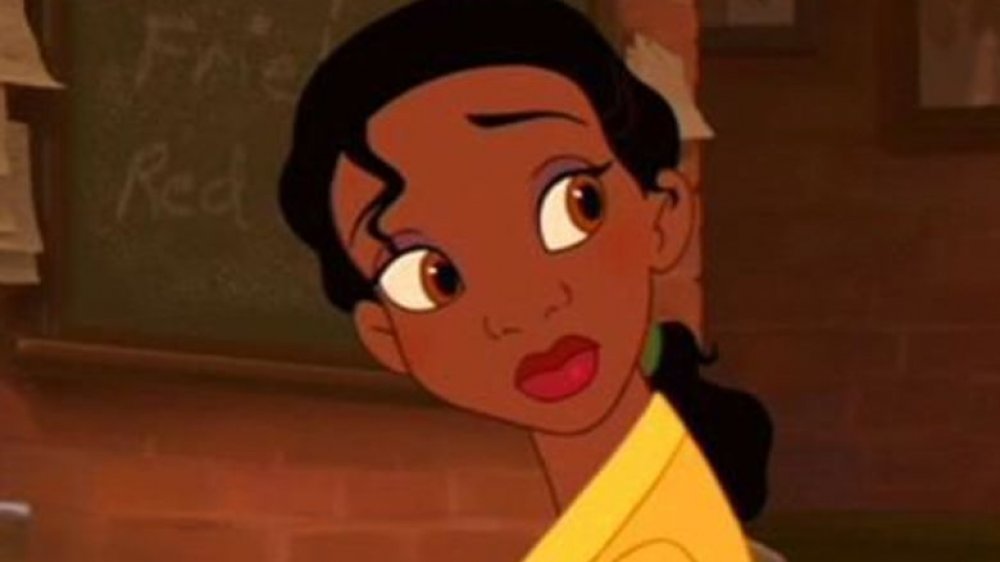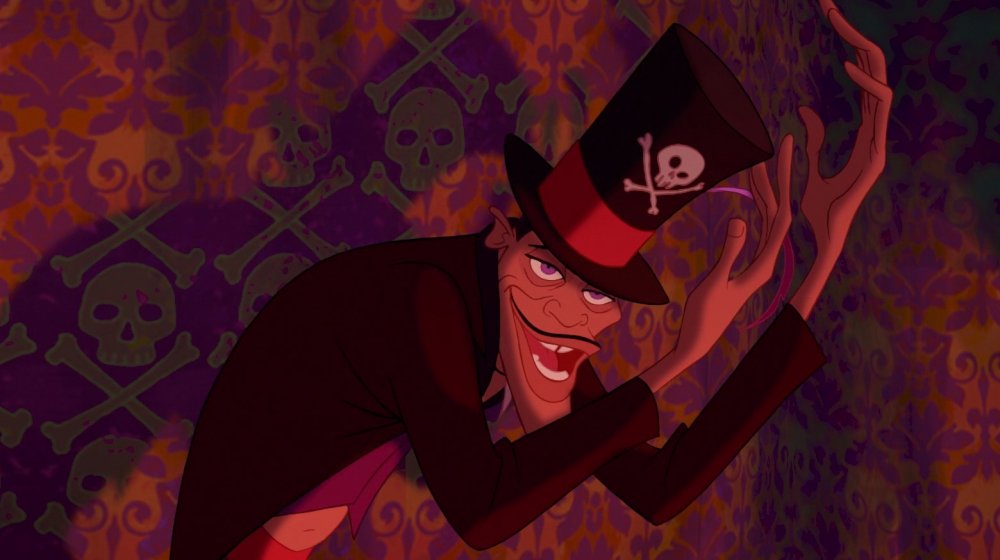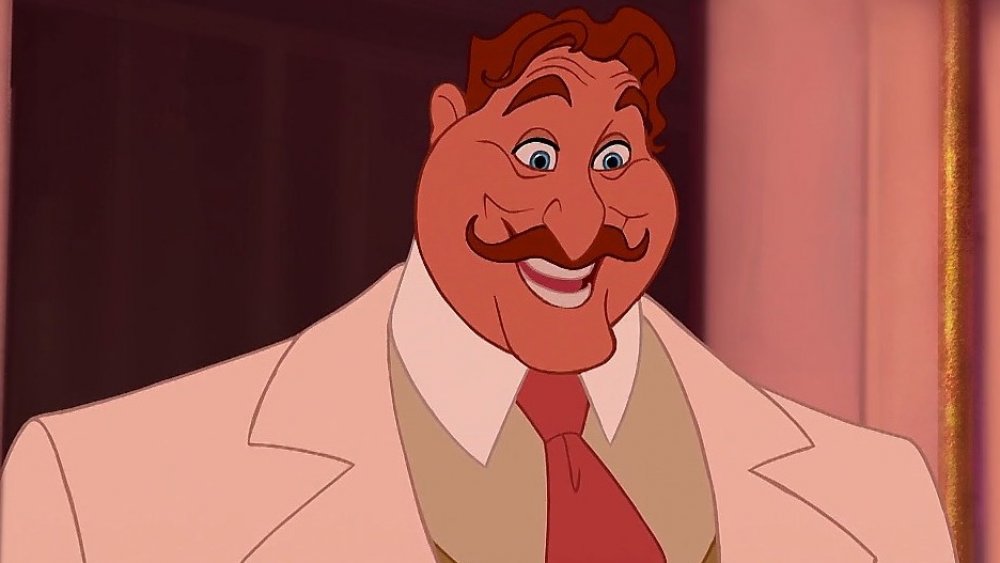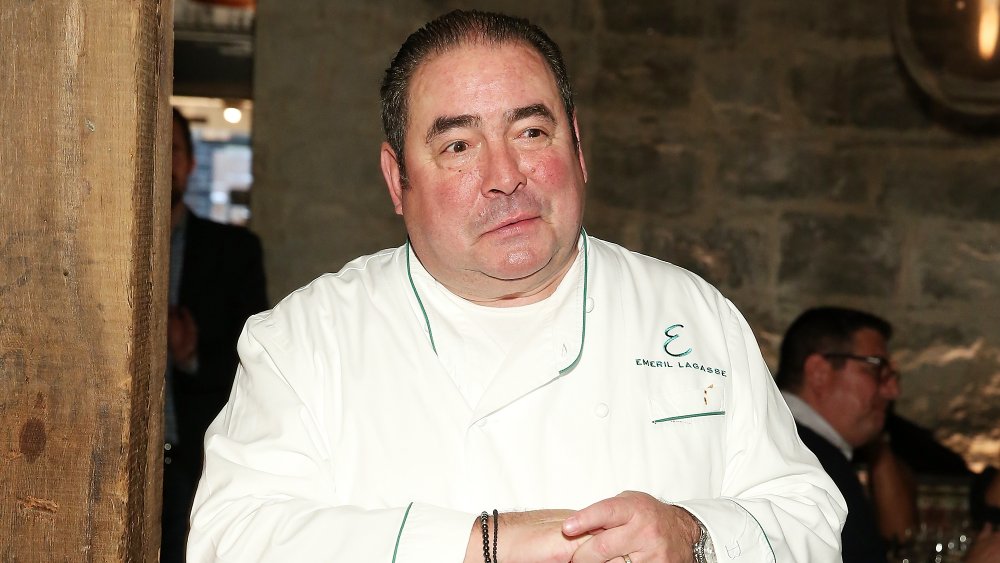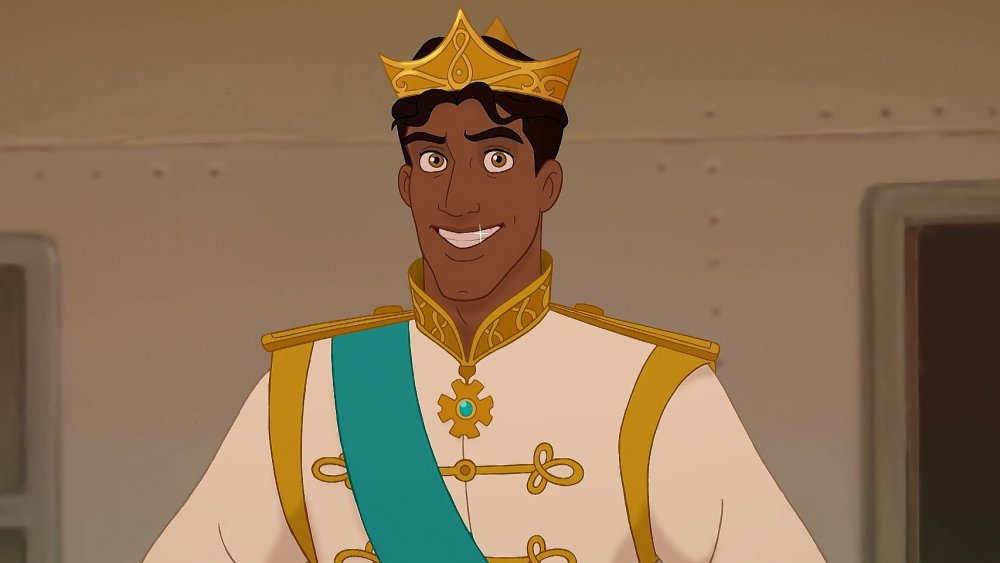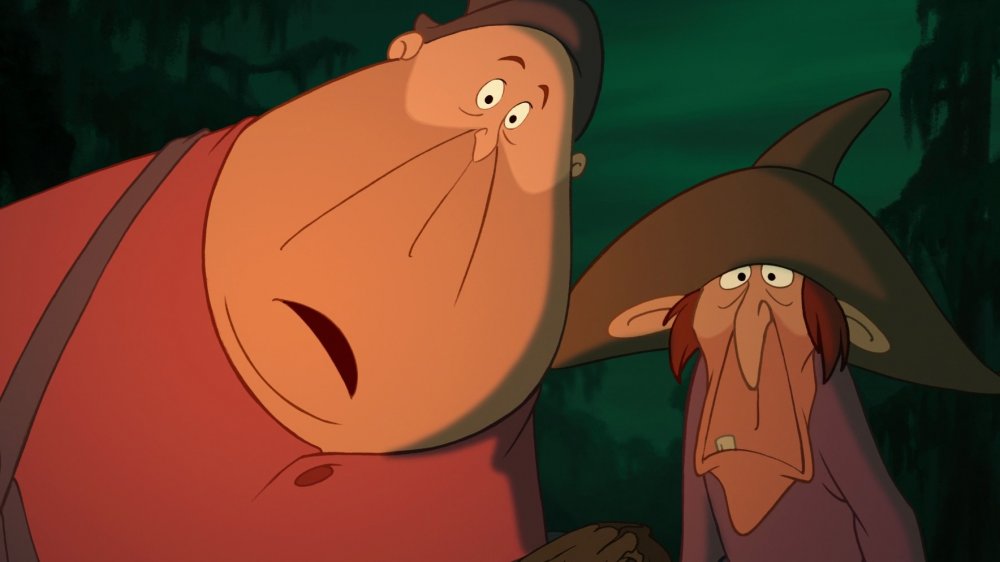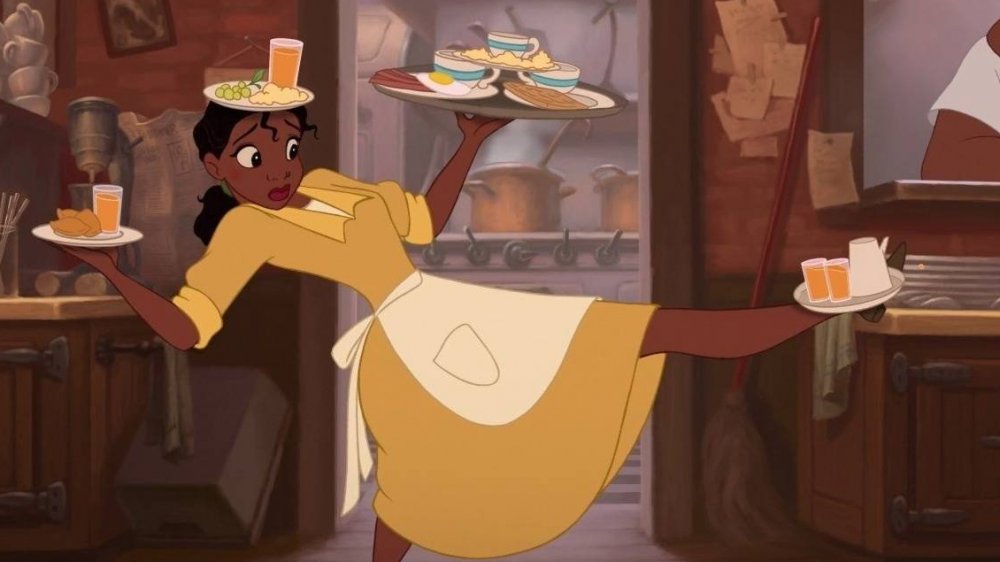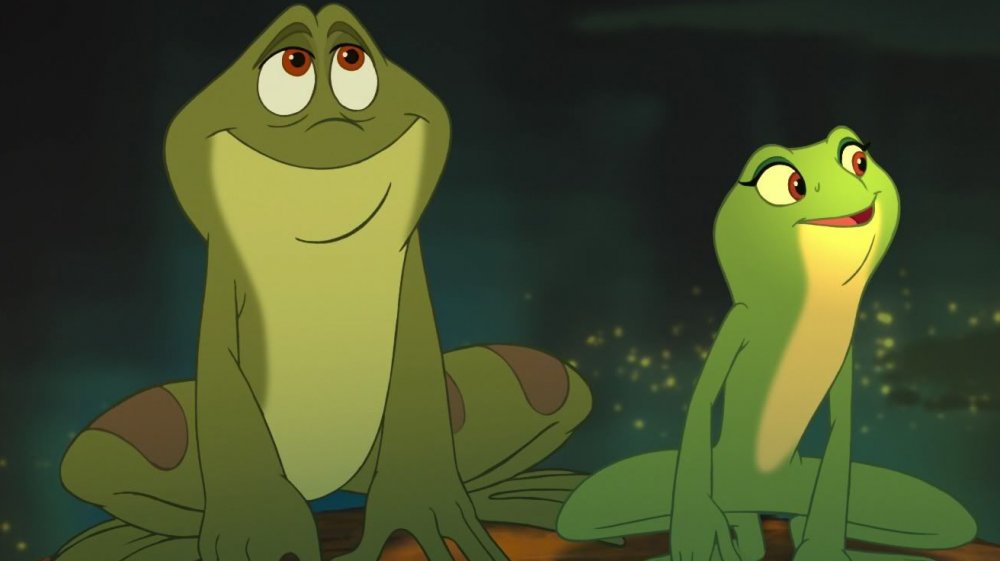Things Adults Only Notice In The Princess And The Frog
The Princess and the Frog is a lively take on a classic fairy tale, something Disney does very well (and often). A retelling of "The Prince and the Frog," it follows Tiana, a young woman working herself to the bone with the dream of opening her own restaurant, only to get sidetracked when she's magically turned into a frog in a lavishly realized 1920s New Orleans. It's a delightful, jaunty movie with plenty for kids to enjoy, like dancing animals, wacky comedy, and dramatic transformations.
However, there's plenty for grown-ups to like in The Princess and the Frog. Disney seems to be aware that millions of adults are going to wind up watching this and other animated movies over and over for years — because when kids like a movie, they want to view it pretty much non-stop. And so, writers and animators laced The Princess and the Frog with sight gags, cultural references, subtle gags, and mischievously kid-unfriendly material. Here are some moments in Disney's The Princess and the Frog that only adults notice (or understand.)
Disney references in The Princess and the Frog
The Princess and the Frog opens with a scene of Tiana as a child, hanging out with her wealthy best friend Lottie in her well-appointed bedroom. It's filled with toys and dolls that look suspiciously familiar, including a shelf full of Barbie-sized dolls of princesses (as in Disney princesses) and a big dollhouse that resembles Cinderella's castle — the big one at Disneyland. Kids might spot this homage to other Disney things, but it may not baffle them the way it does an adult, who could be left wondering if this Disney movie takes place in a world where Disney movies exist.
A few minutes later, the film delves into a big musical number called "Down in New Orleans," establishing the movie's setting: a gorgeous and exciting early 20th century Big Easy. Similar to the "Belle" number in Beauty and the Beast, this scene allows viewers to see characters going about their day. A now adult Tiana hops onto a streetcar emblazoned with the number A113 — a recurring Easter egg in movies from Disney's sibling studio Pixar, referencing a classroom number at Cal Arts where many animators got their start. Seconds later, a woman can be seen shaking out a rug from a third-story balcony (pictured), and that rug is identical to the magical one from Aladdin.
There's a lot of booze for a Disney movie
Disney prides itself as the very picture of family-friendly wholesomeness. What usually doesn't fit into such an image and worldview is the consumption of alcohol, that familial adult beverage and intoxicant enjoyed by millions around the world. Well, they don't enjoy it with Disney, anyway. It was nearly impossible to buy a boozy beverage at Disneyland until 2019, after all. As such, Disney movies are steadfastly free of most anything adult-oriented, including alcohol, which is why its casual appearances in The Princess and the Frog are so noticeable, not to mention surprising, to grown-up viewers.
Toward the beginning of the film, in a fantasy sequence set to the song "Almost There," Tiana details to her mother what her long-dreamed of restaurant will look and feel like. During the whirlwind number, Tiana chugs a glass of wine and authorizes a boozy bananas foster for the menu. She's then lauded for her efforts by dozens of her pretend restaurant's appreciative guests, who hoist their champagne glasses in the air in a toast. Tiana gets a glass, too, but she keeps working, tossing some wine into a pan. That's a lot of liquor, and all at once, for a Disney movie.
Tiana sures looks familiar
Disney's animators don't pull the designs for characters out of nowhere — The Princess and the Frog isn't Avatar. The studio famously models its human cartoon characters after real people who happen to have the strapping good looks of a Disney prince or the timeless beauty of a Disney heroine. For example, Aladdin from Aladdin is reportedly based on Tom Cruise, and Who's the Boss teen star Alyssa Milano provided inspiration for Ariel from The Little Mermaid.
A keen-eyed adult may think that at least one character in The Princess and the Frog looks a lot like specific actor — the very actor who voices that animated figure. Broadway star Anika Noni Rose portrays Tiana, and they share at least a couple of traits. Both human and cartoon are left-handed and have dimples. And when she was at New York Comic Con in 2019, Rose talked about the first time she saw the character designs, saying (via Insider), "I had no idea that Tiana was going to look as much like me as she did, and I was mind-blown."
That's some deeply unsettling wallpaper
Early in The Princess and the Frog, Prince Naveen seeks out the help of a witch doctor named Doctor Facilier. That means he's a practitioner of voodoo, a mystical spiritual system with a long history in New Orleans and one that's usually presented as dark and disturbing in films and TV shows. It's not a concept often explored in Disney movies, but adults will recognize all kinds of voodoo imagery and concepts from absorbing pop culture for many more years then their children have.
For example, Doctor Facilier's shadow is almost a sidekick, as the dark, menacing figure acts of its own accord. Grown-ups who know a little bit of French, a major language in Louisiana, will also see some foreshadowing in the name "Doctor Facilier." Translated into English, his last name means "one who makes things easy." But since he's a witch doctor, that's a foreboding warning. He'll only seemingly make things easy for his patrons. After all, he turns Naveen into a frog, all part of a plot to steal Big Daddy's fortune away from him.
Doctor Facilier is clearly bad news and a bad guy, as evidenced by a subtle clue that most viewers won't see. As he passes by a papered wall, his mere presence briefly transforms the normal pattern into menacing skulls and crossbones, much like the ones Doctor Facilier wears on his hat.
The Princess and the Frog has a lot of references to Tennessee Williams
Even if you didn't study them extensively, most adults likely have a passing knowledge of the plays of Tennessee Williams. The American writer's moody, emotionally devastating stage works were phenomenally popular in the mid-20th century, not to mention influential, so much so that certain elements from them have permeated pop culture.
Williams' most famous plays, Cat on a Hot Tin Roof and A Streetcar Named Desire, were both made into classic films in the 1950s. Like The Princess and the Frog, both are set in the southern U.S., and they get a lot of dynamic flavor out of it. And in the former, Burl Ives of Rudolph the Red-Nosed Reindeer fame plays a wealthy, gregarious Mississippi tycoon who everybody calls Big Daddy. That also happens to be the name of the similarly wealthy and gregarious sugar tycoon in The Princess and the Frog, the doting father to Lottie La Bouff.
But the Williams references don't stop there. At one point in the film, Big Daddy holds a masquerade ball in honor of Prince Naveen, which gets interrupted when frog Naveen runs wild throughout. This prompts Big Daddy to shout at his dog to "get that frog!" The dog's name is Stella, as in the name of the character from A Streetcar Named Desire, a Williams play set in New Orleans. Even if you haven't seen the play or the movie it inspired, you're no doubt familiar with Marlon Brando's character, Stanley Kowalski, shouting that name at the top of his lungs.
A TV chef reference? Bam!
Marlon Brando's big breakout performance came in Tennessee Williams' A Streetcar Named Desire. Brando played the brutish, Stella-shouting Stanley Kowalski on both Broadway and in the 1951 Hollywood adaptation, winning an Oscar nomination for his film performance. So why's that important? Well, Tiana and Naveen — both in frog form — run afoul of a bayou alligator named Marlon, which is no doubt a reference to the star of the New Orleans-set Streetcar. However, Marlon the gator isn't voiced by Brando, but instead, someone with an extremely recognizable voice — to adults, at least.
Emeril Lagasse is one of America's most respected and popular chefs. A Louisiana native, he specializes in the region's specific and wonderful cuisine, but he rose to household name status as one of the first major Food Network personalities, thanks to his vibrant cooking show Emeril Live, where he'd punctuate the adding of ingredients to a dish with an ear-splitting "BAM!" As one of the biggest champions of New Orleans culture, it just wouldn't have been right if the likable showman didn't land a role in a Disney movie celebrating the Crescent City. So it's a fun little shout-out to the parents watching that Lagasse portrays an alligator. Kids probably won't make the connection, unless they were heavy into Food Network's daytime programming slate in the late '90s.
Naveen is a prince of nowhere
Many Disney movies are based on fairy tales developed hundreds of years ago in Europe, at a time when kings and queens ruled over their supposedly admiring subjects. The Princess and the Frog is no exception, as the story concerns an eligible price named Naveen coming to New Orleans to find a wealthy bride — his family has cut him off for his wasteful ways — so he can return to the life of lavish privilege to which he's grown accustomed.
He has his designs on Lottie La Bouff, daughter of sugar baron Big Daddy and best friend to Tiana. She's eager to couple up, too, setting the plot in motion by hiring Tiana to make beignets for the ball to be held in Naveen's honor upon arrival. She mentions that he's the prince of Maldonia, which kids may think is a real place. After all, it sounds at least vaguely European and regal. However, adults know that there's no such country as Maldonia, but if they didn't, they might have been tipped off by a subtle sight gag earlier in the movie. During the "Down in New Orleans" number, viewers can spot a newspaper mentioning that Maldonia can't be found on a map. Why not? Because it doesn't exist.
Of mice, men, and bayou hunters
Of Mice and Men is a landmark work in the canon of American literature. A history lesson as much as it is a sad tale of human frailty, John Steinbeck's 1937 novella concerns two itinerant ranch hands desperate for work in California during the Great Depression. George is smart and jaded, while Lennie is large and beset with mental disabilities ... and has a habit of accidentally killing animals and getting himself into unfortunate situations. George acts as his protector, and ultimately, he has to save Lennie from himself in one of the saddest endings of any book ever.
Adults know all of this because millions read Of Mice and Men in junior high or high school, as much for its stature and importance as because it's a short and easy book to finish. George and Lennie, as physical and behavioral archetypes, have become familiar, and there are shades of them in the frog hunters in The Princess and the Frog. Reggie, the short and angry leader, pushes around his fellow frog seekers, Darnell and Two-Fingers. As there are three of them and they're bumbling, comparisons could be made to the Three Stooges, but the way in which Reggie interacts with the larger, innocent, and strong Darnell may remind viewers of Steinbeck's famous duo.
Tiana's work schedule is excruciating
After establishing that Tiana had some serious cooking prowess as a child, The Princess and the Frog introduces viewers to the adult Tiana who, while working in the food service industry, isn't yet a restaurateur. Staggering to bed at dawn after an overnight shift, Tiana gets about five seconds of sleep before her alarm clock goes off, and she forces herself to her feet to change out of the waitressing uniform she still has on from the night prior into the one she has to wear for her day job. Tiana works extremely hard because she's laser-focused on the dream of saving up enough money to open her own restaurant. Adults have to recognize (and appreciate) these sobering truths about not only economic insecurity, but that reaching big goals takes a lot of effort and an extreme amount of hard work applied over a long period of time. That's a good lesson for kids, but it's one that adults know all too well.
It's also radically different from the usual trajectory of a female protagonist in a Disney film. Tiana isn't the typical "princess" from the House of Mouse. She's driven, self-sufficient, and her main concern isn't landing a husband or wishing hard for a charming prince to whisk her away from her life of boredom and obscurity. Rather, Tiana is carving out her own path, showing viewers that dreams are only as good as the work that will make them come true ... and that's pretty arduous.
In The Princess and the Frog, the main characters are naked for most of the movie
Prince Naveen is the first character in The Princess and the Frog to get turned into a frog, courtesy of the voodoo from witch doctor Doctor Facilier. Naveen then finds Tiana at a masquerade ball, and because she's dressed to the nines in a ball gown and tiara, he believes her to be a princess. A kiss from her would turn him human again, but since she isn't a royal, the kiss turns her into a frog, too. And then there are two talking frogs.
Strangely, when both human beings are turned into tiny amphibians, their clothes don't shrink with them but rather disappear completely. From that point on, as the frog versions of Naveen and Tiana hit the swampy road to find voodoo queen Mama Oldie to transform them back, they're completely naked. In other words, The Princess and the Frog is a movie for kids about two adults who are nude in public. But hey, in classic romantic comedy fashion, they don't get along at all at first, so nothing physically untoward goes down.
